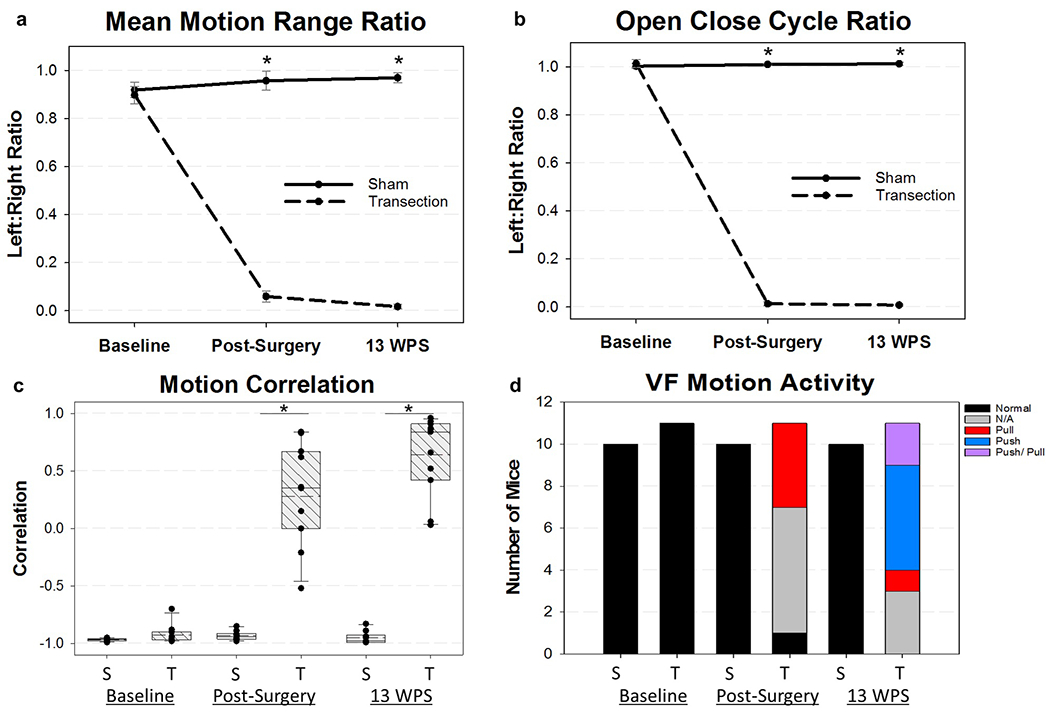Figure 9.

Vocal Fold Motion Outcomes. (a) Mean Motion Range Ratio (MMRR) and (b) Open Close Cycle Ratio (OCCR) were significantly impaired in the RLN transected mice immediate post-surgery and at 13 weeks post-surgery (WPS). If mice were detected to have a positive cross correlation value (paradoxical movement), a 0 was assigned for MMRR. Additionally, the frequency threshold for OCCR was manually adjusted in our VFQuantify software to more accurately represent the true physiologic movement of the injured VF. (c) Vocal fold (VF) activity was assigned using a motion correlation coefficient (Mcorr) value. RLN transection resulted in mice with positive Mcorr values post-surgery and at 13 WPS. Median = solid horizontal line; Mean = dashed horizontal line. (d) VF motion activity was assigned as determined by the Mcorr value in combination with the left VF steady state motion. All mice at baseline had normal VF activity. However, mice undergoing RLN transection displayed abnormal pulling or pushing of the right VF by the left VF at the two post-surgical time points. At 13 WPS, 2 mice in the transection group had evidence of both pushing and pulling motion, and were manually assigned this dual classification. Mice with minimally correlative Mcorr values between −0.5 and 0.5 did not display normal VF motion nor the paradoxical pushing or pulling motion and received an activity classification of “N/A”. An asterisk (*) denotes statistical significance (p <0.001). Error bars = standard error. S = Sham, T = Transection, WPS = Weeks Post Surgery, VF = Vocal Fold
